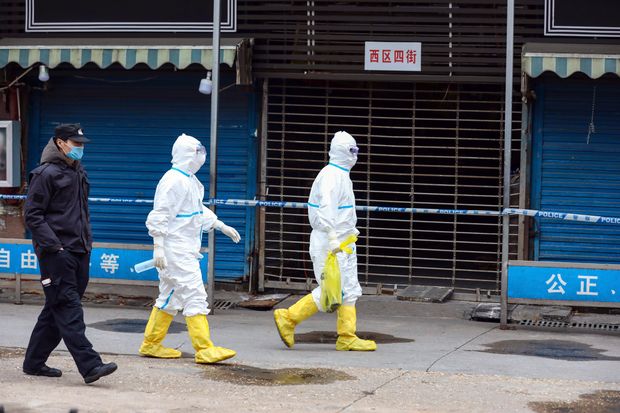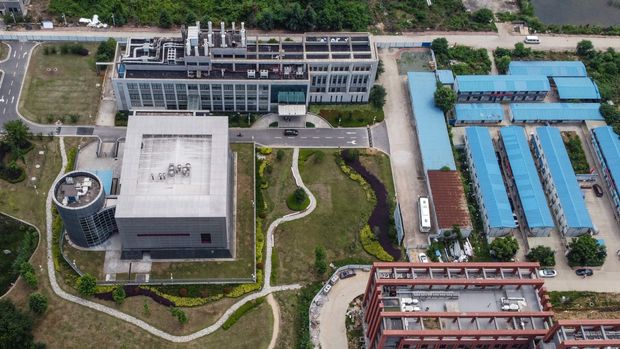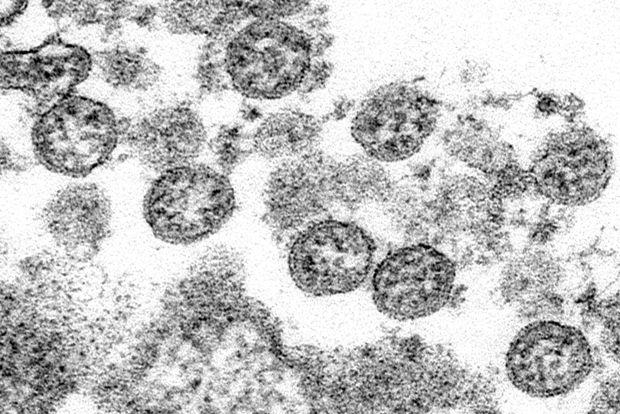What We Know About the Origins of Covid-19
It is among the world’s most consequential mysteries: Where did the coronavirus that killed millions of people and shattered the global economy come from?
The Wall Street Journal has covered the global quest for answers, tracking the World Health Organization, doctors and scientists in China and around the world, the U.S. intelligence community and the vast network of disease specialists, all struggling to piece together a puzzling set of disparate clues. Here are some of the key findings:
1. A WHO-led inquiry into the origins of the virus was stymied from the start.
A Journal investigation found China resisted international pressure for an investigation it saw as an attempt to assign blame, delayed the probe for months, secured veto rights over participants and insisted its scope encompass other countries as well. The WHO-led team that traveled to China in early 2021 to investigate the origins of the virus struggled to get a clear picture of what research China was conducting beforehand, faced constraints during its monthlong visit and had little power to conduct thorough, impartial research without the blessing of China’s government. In their final report, the investigators said insufficient evidence meant they couldn’t yet resolve when, where and how the virus began spreading.
2. China withheld data on potential early cases and delayed sharing information on animals sold at a market where the first cluster was found.

A market in Wuhan, China, was linked to many early cases. Workers in protective gear in Wuhan in January 2020.
Photo: Chinatopix/Associated Press
Chinese authorities refused to provide WHO investigators with raw data on confirmed and potential early Covid-19 cases that could help determine how and when the coronavirus first began to spread in China. Chinese researchers also directed a U.S. government archive to delete gene sequences of early Covid-19 cases, removing an important clue.
For months before the WHO investigators arrived, Beijing declined to disclose information about samples authorities took in the first weeks of the pandemic from animals sold at the Wuhan market linked to many early cases. During their visit, the investigators found no proof of live mammals being sold at that market and quoted market authorities saying there was no illegal wildlife traded there. A study later suggested the Wuhan market was the site of widespread trading in illegal caged wildlife, providing evidence that the virus could have spread naturally from market animals to humans.
3. The question of whether a lab accident was the cause of the pandemic remains unanswered.

Questions have surrounded the Wuhan Institute of Virology since the early days of the pandemic.
Photo: hector retamal/Agence France-Presse/Getty Images
Since the early days of the pandemic, questions have surrounded the Wuhan Institute of Virology and whether an accident at one of its labs could have caused the pandemic. The WHO-led team declared that a lab accident was an extremely unlikely cause of the pandemic. But afterward, WHO Director-General Tedros Adhanom Ghebreyesus called for further investigation into the lab-leak hypothesis.
A group of leading scientists also published an open letter saying the lab hypothesis was plausible enough to merit serious consideration. Other scientists sought more information about the WIV’s role in investigating a mysterious respiratory illness that afflicted six people clearing bat guano from a mine in southwest China in 2012. Three of them died, and samples the WIV took from bats in the mine were later found to contain the closest known virus on earth to the one that causes Covid-19.
Unanswered questions about the miners’ illness, the viruses found at the site and the research done with them elevated into the mainstream an idea once dismissed as a conspiracy theory: that SARS-CoV-2, the virus that causes Covid-19, might have leaked from a lab in Wuhan. China denies that the virus came from the Wuhan Institute of Virology or any other Chinese laboratory.
4. International pressure for a fuller inquiry into the origins of the virus grows.

An electron microscope image shows coronavirus particles from what was believed to be the first U.S. case of Covid-19.
Photo: CDC/Associated Press
The WHO-led investigators have pushed for a second phase of research into the origins of the virus, warning that time was running out to examine blood samples and other important clues in China. Meanwhile, the Journal disclosed a U.S. intelligence report asserting that three WIV researchers became sufficiently ill in November 2019 to seek hospital care. In late May, President Biden ordered that U.S. intelligence agencies report to him within 90 days on how the virus emerged, with a focus on two scenarios—whether the coronavirus came from human contact with an infected animal or from a laboratory accident.
Meanwhile, China said further investigations should now turn to other countries, suggesting that the virus might have originated outside its borders and spread via frozen food.
5. Other efforts to trace the path of the pandemic continue.
As part of an international effort to pinpoint the origin of the Covid-19 pandemic and prevent future disease outbreaks, scientists around the world and organizations such as the American Red Cross and the U.S. Centers for Disease Control and Prevention are looking for new clues in frozen blood, searching for SARS-CoV-2 antibodies or signs of infection.
Other independent scientists are also trying to piece together a picture of how the virus could have been evolving before it exploded in late 2019. Many scientists believe that the most likely explanation is that the virus evolved and jumped from an animal to humans naturally, given evidence that two other coronaviruses spilled over to humans that way in the past two decades and signs of ample opportunity for that to occur.
At least four recent studies have identified coronaviruses closely related to the pandemic strain in bats and pangolins in Southeast Asia and Japan, a sign that these pathogens are more widespread than previously known and that there was ample opportunity for the virus to evolve.
Write to Drew Hinshaw at drew.hinshaw@wsj.com, Jeremy Page at jeremy.page@wsj.com and Betsy McKay at betsy.mckay+1@wsj.com
Copyright ©2020 Dow Jones & Company, Inc. All Rights Reserved. 87990cbe856818d5eddac44c7b1cdeb8


